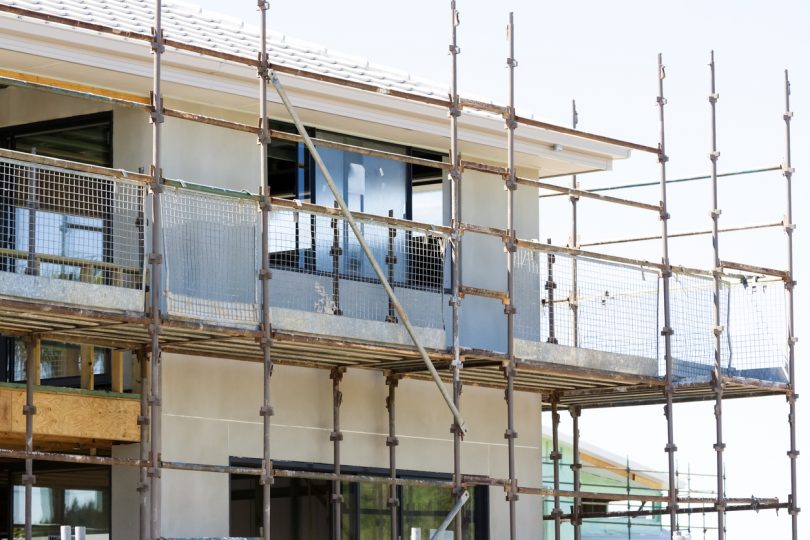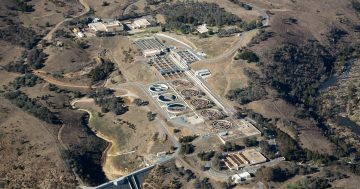
New home buyers in established areas will be forking out more for their properties as developers pass on a new impost to help pay for new water infrastructure.
The new charge is part of Icon Water’s new Water and Sewerage Capital Contributions Code approved by the Independent Competition and Regulatory Commission on Monday.
The Code, which will come into force on 1 January 2018 with an 18-month transition period for properties purchased beforehand, has been the subject of two rounds of community consultation and a draft decision in October from the ICRC, but has been opposed by the property industry.
Icon Water said the Code would be a more efficient and equitable way to fund its infrastructure in urban infill areas where there is expected to be a considerable increase in population.
The ICRC set the new developer charge at $1,200 for each increase in ‘equivalent population’, a calculation based on a certain number of people per dwelling or building set out in the Code.
For residential developments, this means 3.6 persons for free-standing houses, 2.5 for a semi-detached row and terrace, and 2 for apartments, units and flats. For commercial, shops and offices are set at 0.3 of the estimated number of employees, public visitor or sporting buildings 0.05 of short-stay visitors, restaurants and clubs 0.1 of seats, tourist areas or hospitals 0.5 of beds. Other categories include dry trades at 0.3 of employees, and schools and education 0.2 of students and staff.
ACT Property Council executive director Adina Cirson said the charge would increase the fixed costs associated with constructing and developing dwellings right across Canberra.
She said capital works were not only usually shared among the broader community but over a long period of time, not just the immediate purchasers over the next five years.
“That was our fundamental concern, that you were asking a community here and now – particularly first home buyers (they are the people buying those sorts of apartments) – to share a significant burden that people would benefit from for 20 to 30 years,” Ms Cirson said.
“Why should new home purchasers alone be bearing the brunt of the water infrastructure charge?”
The Property Council would be checking to ensure the money collected from the charge covers the cost of the upgraded infrastructure, saying it should be removed once the work was done.
Ms Adina said the new charge added to a layer of imposts in the ACT that undermined certainty for developers, who would prefer a single overall infrastructure charge as found in other jurisdictions.
However, the Property Council was grateful the ICRC had listened to its arguments for a transition period and a single charge and precinct instead of four, which she said would have stifled development in parts of the town in need of renewal.
The charge, which will only apply to a dedicated single precinct established by Icon (see map), is designed to deal with an expected population increase of 90,000 people by 2041 in established areas through urban infill and redevelopment.
Icon expects to reap $77.1 million to help fund projects in Belconnen, Constitution Avenue, Fyshwick, North Canberra, Campbell and Ainslie, and Woden Valley.
Photo: Supplied.
“Urban infill will necessitate upgrades or replacement of certain infrastructure in established areas which will reach or exceed capacity during the forecast period,” the ICRC said.
It said the Code was a fairer and more transparent way of charging for infrastructure upgrades than the current so-called ‘last person standing’ arrangements it will replace.
“The current ACT arrangements for developer contributions to infrastructure are informal and were developed at the time of self-government with a focus on new suburbs. These informal arrangements can see developers pay 100 percent of the cost of any augmentation to service their development. This approach is accepted in new land developments, but can be problematic when applied to augmentation or re-development in established suburbs, creating an unfair charging regime known as the ‘last person standing’ issue,” the ICRC said.
“It can also lead to inefficient augmentation practices, and uncertainty of cost and delay for developers. The projected growth for the ACT will see these concerns become more frequent and apparent unless a formalised, structured and planned approach can be implemented. With these concerns in mind, the Commission supported the introduction of a new industry code to partially fund future augmentations in established suburbs (within precinct).”
The ICRC had considered a four-precinct system but it believed that ‘a simple and uniform capital contribution charge applicable to all established areas in the Territory would remove the potential for charges to be set in a discriminatory fashion between suburbs’. It would also be difficult to administer.
Icon Water will advise developers what they need to pay when a development application is submitted.
It said the new code meant that costs were no longer borne solely by one developer that triggered the need for new water and sewerage infrastructure, but shared the burden across all parties who intend to develop properties within a precinct.
“This code enables Icon Water to sustainably fund the growth of our network in Canberra’s established areas, ” Managing Director John Knox said.
For more information on the Capital Contributions Code, including how the charge will be calculated, go here.














